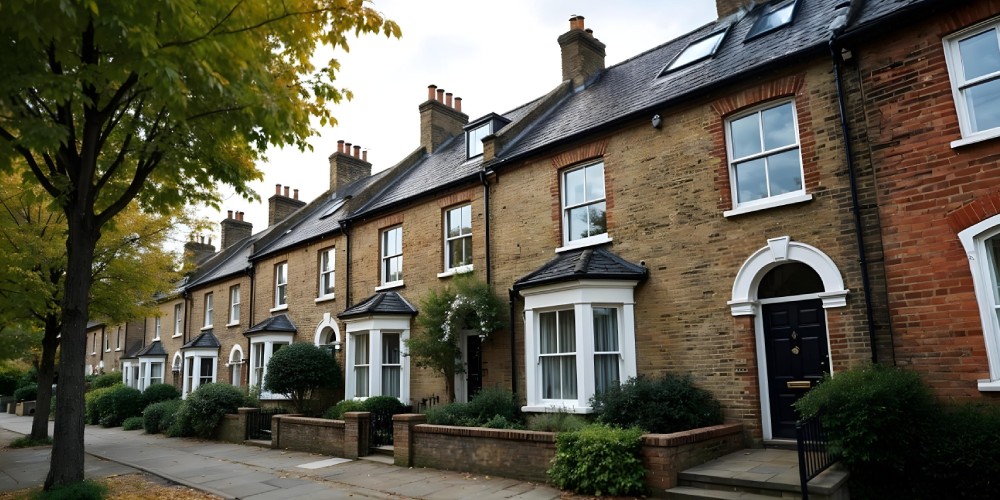HMO bridging finance provides short-term loans for multi-let property purchases or conversions, completing in 7-21 days versus 6-8 weeks for standard mortgages. You’ll need a clear exit strategy, typically refinancing to an HMO mortgage once the property is licensed. Higher short-term costs suit time-sensitive opportunities like auctions or below-market-value purchases where speed matters more than interest rates.
You’ve found an HMO property at auction or a conversion opportunity, but traditional mortgages take too long. With completion deadlines looming, you need finance that moves at market speed.
Standard HMO mortgages can take 6-8 weeks or longer. By the time approval comes through, the opportunity has gone. HMO bridging finance provides short-term funding for time-sensitive property investments, allowing you to act like a cash buyer while planning your long-term refinance strategy.
What Is HMO Bridging Finance and How Does It Work?
HMO bridging finance is a short-term loan secured against a House in Multiple Occupation property – any property rented to three or more unrelated tenants who share facilities. These properties often deliver higher rental yields than single-let investments but come with specific regulatory requirements affecting how you finance them.
The loan provides funding for 3-24 months, giving you time to purchase and prepare the property before refinancing to a long-term HMO mortgage. According to the National Residential Landlords Association’s 2024 research, HMO properties can generate rental yields 30-40% higher than traditional buy-to-let properties, making the short-term bridging costs worthwhile for many investors.
“HMO bridging finance bridges the gap between opportunity and traditional lending timescales. We regularly see investors secure properties at 15-20% below market value simply because they can complete quickly,” says Matthew Archer, Senior Debt Advisory Consultant at Bridging Finance London.
You can cover purchase costs and often refurbishment expenses too, making this an effective solution for properties requiring work before they can be licensed.
How Does HMO Bridging Finance Differ from Standard Mortgages?
An HMO bridging loan can be arranged and complete in 7-21 days, compared to 6-8 weeks for standard mortgages. Bridging lenders assess the property’s potential value rather than focusing heavily on your income, which particularly helps portfolio landlords who may have complex income structures.
Traditional long-term HMO mortgages won’t lend on unlicensed properties or those needing refurbishment. Bridging lenders fund properties knowing you’ll get them licensed and improved during the loan term.
“The key difference lies in flexibility. Traditional lenders want everything completed before they’ll consider lending. Bridging lenders understand the HMO investment process and fund based on the property’s future state,” explains Sean Horton, Property Finance Specialist at Respect Capital.
The interest rates are higher – typically 0.5-1.5% per month compared to annual rates of 4-7% for HMO mortgages – but you’re paying for speed, flexibility, and the ability to capitalise on time-sensitive opportunities.
Let’s talk bridging loans!
When Do You Need HMO Bridging Finance?
Why Is Bridging Finance Essential for Auction Purchases?
Property auctions demand 28-day completion with no extensions. Auction bridging finance lets you act as a cash buyer, bidding with confidence on properties that often sell 10-25% below market value. According to Essential Information Group’s 2024 auction analysis, properties requiring fast completion sell at an average discount of 18% compared to private treaty sales.
Auction properties often sell below market value precisely because they require fast finance, giving you a competitive advantage over buyers dependent on traditional mortgages.
How Does Bridging Finance Support Property Conversions?
Converting a house into an HMO requires the right works and licensing. You can’t get an HMO mortgage until the property is licensed and often needs to be tenanted too. Bridging finance funds the purchase and conversion, giving you time to complete the project without missing the opportunity.
This works particularly well when you’ve found a property with strong conversion potential in areas with high rental demand from students, young professionals, or key workers.
Related: Financing Your Commercial to Residential Conversion
What Makes Bridging Finance Suitable for Quick Acquisitions?
Sometimes opportunities need fast action.
A vendor might offer below market value for quick completion, or you need to break a property chain to secure your onward purchase. Bridging finance lets you move at the required speed, preventing you from missing opportunities while arranging long-term finance.
“Speed equals opportunity in property investment. Every week of delay potentially costs you thousands in rental income or risks losing the deal entirely,” notes Matthew Archer.
How Do HMO Bridging Loans Work from Application to Completion?
What Is the Typical Application Process?
The process starts with an initial assessment where you provide property details, your plans, and repayment strategy. A specialist broker can often indicate terms the same day, giving you certainty before making offers or committing to auction purchases.
The lender arranges a property valuation within 1-3 days, assessing both current value and potential value after your planned works. This dual valuation approach helps secure higher loan amounts based on the property’s future income potential.
Legal work runs concurrently with the valuation process rather than sequentially, reducing overall timescales. From initial application to funds release, expect 7-21 days depending on property complexity and legal title clarity.
What Interest Payment Options Are Available?
Serviced interest means monthly payments, similar to standard mortgages. This suits investors with consistent cash flow who want to control their total borrowing costs.
Rolled-up interest is more common with bridging finance – the interest adds to your loan balance monthly and you repay everything at completion. This preserves your cash flow during the bridging period but increases your total repayment amount.
Some lenders offer retained interest, deducting the full term’s interest upfront from your loan advance. According to Bridging Trends’ 2024 market report, approximately 60% of HMO bridging borrowers choose rolled-up interest to maximise available working capital during the property conversion phase.
Read more: How Do Bridging Loan Interest Options Work?

What Do You Need to Know About HMO Licensing Requirements?
Properties with five or more unrelated tenants require mandatory HMO licensing throughout England and Wales under the Housing Act 2004. Many local authorities also operate additional and selective licensing schemes covering smaller HMOs with 3-4 tenants.
You can’t legally let an HMO without the appropriate license. Penalties for operating unlicensed HMOs include fines up to £30,000 and Rent Repayment Orders forcing you to repay up to 12 months of rent to tenants.
Most councils take 8-12 weeks to process applications, though some areas experience longer delays. Most HMO mortgage lenders won’t approve until the property holds a valid license, making timing crucial to your exit strategy.
How Should You Plan Your License Application?
Apply early in your bridging term – don’t wait until refurbishment completes. You can submit applications while works are ongoing if you demonstrate how the property will meet required standards through plans, specifications, and contractor schedules.
“The licence application should be your first action after exchange, not your last. It’s the longest lead-time item in your project and determines when you can exit the bridging finance,” advises Jennifer Morrison, HMO Compliance Consultant.
Fees range from £300 to over £2,000 depending on area and property size. The council will inspect before issuing the license, checking fire safety systems, room sizes, bathroom and kitchen facilities, general property condition, and management arrangements.
What Are the Exit Strategies for HMO Bridging Loans?
How Does Refinancing to an HMO Mortgage Work?
Most investors refinance to an HMO mortgage when their bridging term ends. HMO mortgages typically offer 5.5-7% interest rates and 25-30 year terms, dramatically reducing your monthly costs compared to bridging finance.
Start your mortgage application 3-4 months before your bridging loan ends to ensure smooth transition. The property needs to hold a valid license before most HMO mortgage lenders will proceed. According to the Specialist Finance Network’s 2024 data, properties with tenants in place secure mortgage approval 40% faster than vacant licensed properties.
Having tenants in place strengthens your application significantly, as lenders see evidence of actual rental income rather than estimates. Most HMO mortgage lenders require the property to be 70-80% tenanted before completion.
Why Must You Plan Your Exit Strategy from Day One?
Your exit strategy isn’t something to consider when the bridging term ends – plan it from day one. Create a detailed timeline including refurbishment works, license application and inspection, tenant marketing and viewings, and mortgage application milestones.
Build relationships with HMO mortgage brokers early in your project. They’ll advise on lender requirements, helping you ensure your conversion meets lending criteria and avoid costly rework or modifications.
Some investors use sale as an exit strategy, particularly if the conversion adds substantial value. Properties purchased at auction for £200,000, converted for £50,000, and worth £350,000 when licensed provide comfortable profit margins even after bridging costs and selling expenses.
Read more: Bridging loan exit strategies
What Are the Costs and Fees for HMO Bridging Finance?
HMO bridging finance costs more than standard mortgages, but you’re paying for speed and flexibility that traditional products can’t provide. Arrangement fees typically run at 2% of the loan amount – so £4,000 on a £200,000 facility.
You’ll pay for property valuation, usually £500-£3,000+ depending on property size and complexity. Legal fees run £1,500-£3,000 for straightforward cases, though complex titles, leasehold properties, or multiple charges increase costs.
How Do You Calculate Total Borrowing Costs?
Calculate total cost considering interest and all fees together. With rolled-up interest at 1% monthly on a £200,000 loan over 12 months, you’ll pay approximately £25,000 in interest plus £4,000 arrangement fee and £2,000 in other fees – around £31,000 total.
This sounds substantial until you consider the alternative. Waiting 8 weeks for a standard mortgage might cost you the property entirely. Missing the auction purchase could mean paying £40,000 more through an estate agent months later.
“Investors should calculate the opportunity cost, not just the borrowing cost. That auction property at £180,000 needing £30,000 bridging costs still beats buying the same property for £240,000 through normal channels,” explains Sean Horton.
Many bridging loans don’t charge early repayment penalties, allowing you to exit as soon as your long-term finance completes. Some lenders offer discounted rates for longer commitments, though flexibility usually matters more than marginal rate reductions.
How Can a Specialist Broker Improve Your HMO Bridging Experience?
Specialist brokers make HMO bridging smoother and often cheaper despite their fees. Brokers access lenders who don’t deal directly with the public – approximately 40% of the bridging market operates exclusively through intermediaries according to the Association of Bridging Professionals’ 2024 industry survey.
Many specialist HMO lenders only work through introduced business, giving you access to wider products and potentially better terms than approaching lenders directly.
What Additional Value Do Brokers Provide?
A broker understanding HMO regulations guides you through licensing complexities, advising on application timing, documentation requirements, and common pitfalls that delay approvals. They know which lenders accept unlicensed properties and which require licenses in place before offering terms.
Experience with exit strategies is particularly valuable – brokers advise on realistic refinancing timescales and coordinate between your bridging and future mortgage lenders, ensuring your project timeline works from start to finish.
For auction purchases, brokers can arrange decision-in-principle confirmation before you bid, demonstrating to the auction house that you’re a serious buyer with finance ready. This confidence often makes the difference between winning and losing competitive lots.
“A specialist broker saves you more than their fee through better rates, appropriate lender selection, and avoiding expensive mistakes. We recently saved a client £8,000 by structuring their facility correctly from the start,” says Matthew Archer.
Making HMO Bridging Finance Work for Your Investment Strategy
HMO bridging finance works best for time-sensitive opportunities where standard mortgages can’t meet your needs.
The higher short-term costs make sense when securing below-market-value properties, acting on auction purchases, or funding conversions that add significant value to your property portfolio.
If you’re new to HMO investing, professional advice becomes important. A specialist broker can help structure your project properly, avoid licensing pitfalls, and ensure your exit strategy is realistic given current lending criteria.
Research local licensing requirements before committing to any HMO purchase. Check your local authority’s website for their licensing scheme details, fee structures, and typical processing times.
Contact the HMO licensing team with any questions about whether your intended property needs a license and what standards you’ll need to meet.
Factor in application timescales when planning your bridging term length. Allow 12-14 weeks minimum for license applications from submission to approval, including time for any remedial works the council requires before inspection.
Ensure your property will meet required standards before purchasing. Common issues include inadequate fire safety systems, undersized bedrooms, insufficient bathroom facilities, and poor property maintenance. Budget appropriately for any upgrades needed to meet licensing standards.
HMO bridging finance isn’t right for every property investment.
But when you’ve found the right opportunity and time matters, it’s often the difference between building your portfolio and watching someone else build theirs. Properties generating £2,000-£3,000 monthly rental income justify the short-term costs when the alternative means missing the opportunity entirely.
The key to successful HMO bridging lies in thorough planning before you commit.
Understand the licensing requirements, know your refurbishment costs, have your exit strategy mapped out, and work with specialists who understand HMO investment rather than generalist lenders or brokers.
FAQ
Yes, bridging lenders will provide finance for unlicensed HMO properties because they understand you need time to obtain the license during the bridging period. However, you must demonstrate a clear plan for obtaining the license and most require you to apply during the loan term. Some lenders won’t proceed if your council has previously refused HMO licenses or if planning restrictions prevent HMO use.
HMO bridging loans typically complete within 7-21 days from full application, though some specialist lenders can complete complex cases in as little as 5 days if everything is straightforward. The speed depends on property valuation scheduling, legal title clarity, and your documentation readiness. Auction purchases often complete fastest because the 28-day deadline focuses all parties on rapid processing.
Standard HMO bridging LTVs range from 60-75% of current value, with some specialist lenders offering up to 80% for strong applications. Some lenders also provide development finance elements, lending against the property’s gross development value (GDV) after refurbishment. This can provide 100% funding in some cases when combining purchase and refurbishment costs against future value.
Related: Loan to Gross Development Value
No, HMO bridging lenders focus on the property’s value and your exit strategy rather than your personal income. They want to understand how you’ll repay the loan – usually through refinancing to an HMO mortgage – rather than evidence of current income to service the debt. This makes bridging particularly suitable for investors with multiple properties or complex income structures that don’t suit traditional mortgage applications.
If you can’t obtain the license, you’ll need an alternative exit strategy – either selling the property or potentially using it as a single-let with a standard buy-to-let mortgage instead. Most brokers advise researching the local authority’s licensing approach before purchasing, checking approval rates, typical conditions, and any areas where licenses are routinely refused. Some lenders require license applications to be submitted within specific timeframes to protect their security.
Most lenders offer extension options, typically for 3-6 month periods subject to reassessment and additional fees of 1-2% of the loan amount. However, extensions aren’t guaranteed – the lender will reassess your exit strategy and may require evidence of progress towards refinancing. Planning conservatively with your initial term length helps avoid extension fees and reduces stress if licensing or refurbishment takes longer than expected.
Read more: Can You Extend the Term of a Bridging Loan?
Many HMO bridging lenders provide additional funds for refurbishment alongside the purchase price, typically up to 100% of refurbishment costs when combined with the purchase doesn’t exceed 75% LTV of the end value. The funds are usually released in stages as works complete, requiring quantity surveyor inspections to verify progress. Light refurbishment under £20,000 may be released upfront at some lenders’ discretion.
Read more: Guide to Light and Heavy Refurbishment Bridging Loans
Yes, student HMOs are common uses for bridging finance, particularly for September term-time purchases requiring fast completion. Properties near universities typically have strong HMO rental demand and clear exit refinancing options. However, consider the seasonal nature of student tenancies when planning your exit strategy – most HMO mortgage lenders want to see sitting tenants, which may require waiting until the academic year starts if you complete during summer.
Properties converting from single occupancy (C3 use class) to small HMOs with 3-6 people (C4 use class) don’t usually require planning permission in most areas, though some councils have removed this permitted development right through Article 4 directions. Larger HMOs with 7+ residents (Sui Generis use) always require planning permission. Check your local authority’s planning requirements before purchasing, as planning refusal with no viable alternative use could leave you unable to refinance.

